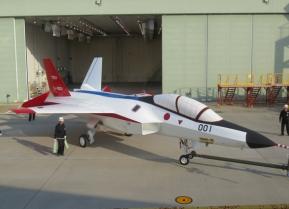Introducing China's J-20 Stealth Fighter (And All Of Its Deadly Missiles)
The Chinese People’s Liberation Army Air Force made waves at the 2018 Zhuhai Airshow with the latest showing of their flagship fifth-generation stealth fighter, the J-20.
The J-20’s two side-mounted PL-10 missiles, while less conspicuous than their long range counterpart, are a key factor in the J-20’s operational versatility. A short-range infrared air-to-air missile, the PL-10 can be fired at off boresight angles of 90 degrees using the J-20’s Helmet Mounted Display (HMD). In other words, the PL-10’s on the J-20 can be fired in the direction that the pilot points their head.
The Chinese People’s Liberation Army Air Force made waves at the 2018 Zhuhai Airshow with the latest showing of their flagship fifth-generation stealth fighter, the J-20.
As is common with airshow coverage, large swaths of the ensuing commentary focused on the J-20’s handling and maneuverability as it performed a series of rolls and a climb. But this elides what is perhaps the most significant aspect of the J-20’s Zhuhai showing: its weapons system.
During the performance, the J-20 opened its missile bay doors to reveal four PL-15 missiles accompanied by two PL-10 missiles on either side. The PL-15 is a long range air-to-air missile slated to enter service in 2018. Outfitted with an active electronically scanned radar and featuring a reported maximum range of up to 300 km, the PL-15’s impressive specifications place it in the ranks of the top air-to-air missiles along with the European Meteor missile and Russian K-37M.
The PL-15’s effective range in actual aerial engagements is certain to be lower than the maximum range 300 km, but is nonetheless much higher than its American AIM-120 AMRAAM counterpart’s estimated 180 km or less. American general Herbert Carlisle voiced serious concerns in 2015 when the development of the PL-15 entered the public knowledge: “Look at our adversaries and what they’re developing, things like the PL-15 and the range of that weapon.” General Carlisle raised the same issue in an interview with FlightGlobal: “The PL-15 and the range of that missile, we’ve got to be able to out-stick that missile.”
The American F-22 and F-35 fighters are now equipped with the latest AIM 120-D missiles, but a massive range deficit remains nonetheless. The challenge of the PL-15 comes on the heels of questions about the uncertain future of the aging AMRAAM system. As Captain James Stoneman put it to the National Interest: “Currently there is no program of record for a follow-on… we’ve probably close to maxing it out.” Development of the latest Block III iteration of the short range AIM-9X was cancelled, and Raytheon struggles with a necessary AMRAAM refresh.
The J-20’s two side-mounted PL-10 missiles, while less conspicuous than their long range counterpart, are a key factor in the J-20’s operational versatility. A short-range infrared air-to-air missile, the PL-10 can be fired at off boresight angles of 90 degrees using the J-20’s Helmet Mounted Display (HMD). In other words, the PL-10’s on the J-20 can be fired in the direction that the pilot points their head.
Off boresight targeting is by no means a new technology. In fact, the PL-10 is China’s response to the AIM-9X Block II Sidewinder short range missiles that the United States is selling to Taiwan. There is no reliable information on the PL-10’s range at the time of writing, but it is expected to at least match AIM-9X’s reported maximum range of 20-22 km. Iterative performance differences aside, it is a bigger long-term concern is that the PL-10 and PL-15 are reportedly built with the latest anti-jamming technology at a time when the AIM- 9X and AIM-120D are perceived as increasingly vulnerable to modern digital radio frequency memory (DRFM) jamming techniques.
There is much that is still unknown about the J-20, including its launch mechanism and the final specifications of its WS-15 engine currently in development. It remains to be seen if this particular armament configuration makes it into the regular production process, but the juxtaposition of the PL-15 and PL-10 inside the J-20’s frame can become a stark concern for the United States and some of its regional allies who continue to rely on aging AMRAAM technology.
Mark Episkopos is a frequent contributor toThe National Interest and serves as research assistant at the Center for the National Interest. Mark is also a PhD student in History at American University


